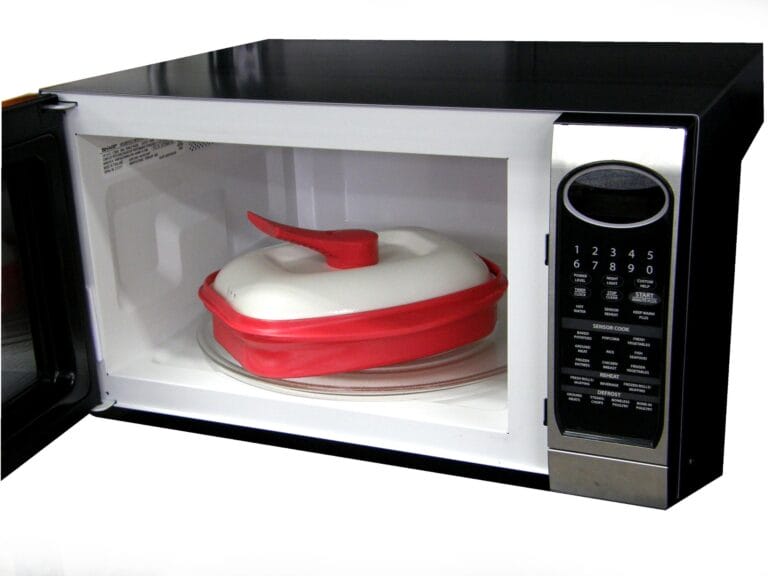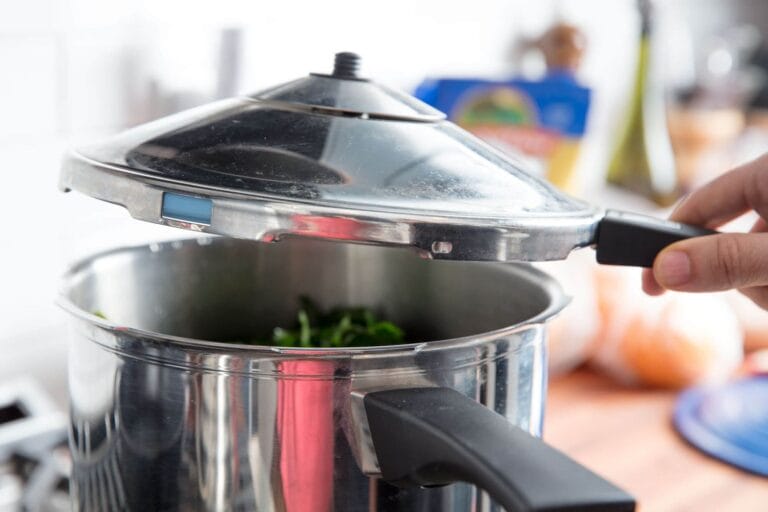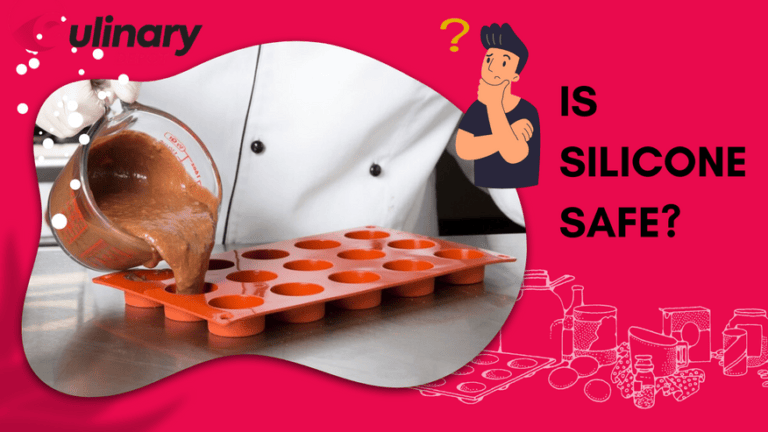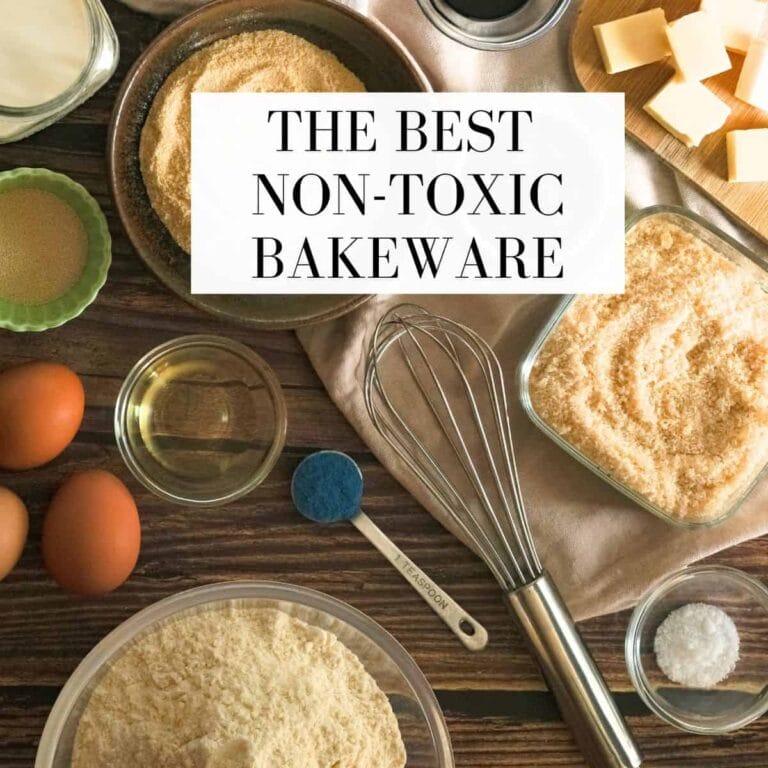
Are you tired of dealing with batter overflow when using small bakeware? Well, worry no more! In this handy guide, we’ll show you how to avoid those messy mishaps.
Whether you’re a novice baker or just looking to up your baking game, these tips and tricks will help you achieve perfect results every time. So, let’s dive in and discover how to prevent batter overflow in small bakeware!
No more guessing and hoping for the best. With our step-by-step instructions and practical advice, you’ll be able to avoid batter overflow like a pro.
From adjusting your recipe to using the right size bakeware, we’ve got you covered. So, get ready to bake with confidence and say goodbye to batter overflow for good!
How to Avoid Batter Overflow in Small Bakeware?
- Choose the right pan size for your recipe.
- Grease the pan with cooking spray or butter.
- Only fill the pan two-thirds full with batter.
- Place the pan on a baking sheet to catch any overflow.
- Reduce the oven temperature by 25 degrees to prevent rapid rising.
- Bake for the recommended time, checking for doneness.
- If the batter overflows, place a baking sheet underneath to catch any drips.
Follow these steps to avoid messy batter overflow and enjoy perfectly baked goodies every time!
1. Choose the Right Pan Size
The first step in preventing batter overflow is to select the appropriate pan size for your recipe. Using small bakeware that is too small can increase the chances of overflow while using one that is too large can result in an undercooked center.
It’s essential to follow the recipe guidelines and use the recommended bakeware size to ensure the best baking results. If you don’t have the exact pan size mentioned in the recipe, you can always adjust the recipe accordingly or divide the batter into multiple smaller pans.
When choosing the pan, also consider its depth. Opt for a deeper pan to allow the batter to rise without overflowing the sides. Deep pans can accommodate a higher rise and reduce the risk of overflow.
Additionally, non-stick pans are preferable as they make it easier to remove the baked goods without causing any damage or mess.
2. Make Batter Adjustments
Sometimes, slight adjustments to your batter can help prevent overflow in small bakeware. One way to achieve this is by reducing the leavening agents in your recipe.
Leavening agents, such as baking powder and baking soda, create bubbles in the batter and make it rise. However, if there is too much leavening, the batter can rise excessively, leading to overflow.
Check your recipe and reduce the amount of baking powder or baking soda slightly, especially when using small bakeware. You can experiment with reducing it by 1/4 teaspoon or even less, depending on the original measurements. This adjustment can help control the rise of the batter and minimize the chances of overflow.
3. Use the Half-Fill Rule
The half-fill rule is a simple yet effective technique to prevent batter overflow in small bakeware. As the name suggests, you only fill the pans halfway with batter. This technique allows enough room for the batter to rise without spilling over the edges.
When dividing the batter between multiple pans, ensure an equal amount in each. Using a kitchen scale can help you achieve precise measurements. If you have excess batter leftover after filling the pans halfway, you can make additional smaller portions or use it for cupcakes or muffins.
Remember, even if the batter doesn’t look like it will rise significantly, it expands during the baking process. Following the half-fill rule will save you from dealing with a messy oven and ensure perfectly baked treats.
4. Use a Baking Sheet or Tray
To provide an extra layer of protection against batter overflow, place your small bakeware on a baking sheet or tray. If, for any reason, the batter does overflow, the baking sheet will catch the spillage, saving you the hassle of cleaning your oven.
Additionally, the baking sheet or tray helps distribute heat evenly and prevents the bottom of your baked goods from burning. It acts as an insulation layer and prevents direct heat contact between the oven’s heating elements and the small bakeware.
Position the baking sheet on the rack just below the rack where your small bakeware is placed. This way, if any overflow occurs, it will be contained within the baking sheet.
5. Monitor the Baking Process
While prevention is key, it’s also crucial to keep an eye on your baked goods as they are in the oven. Checking on them periodically ensures that you can take action if any signs of overflow start to appear.
Look through the oven window during the baking process and observe the rising of the batter. If you notice that it is nearing the top of the pan or starting to spill over, quickly open the oven door and lay a sheet of aluminum foil or parchment paper on top to catch any potential overflow.
Once you’ve made this quick adjustment, close the oven door promptly to prevent heat loss. The foil or parchment paper acts as a protective barrier, preventing the batter from spilling over the edges and keeping your oven clean.
6. Allow for Cooling and Settling Time
After removing your small bakeware from the oven, it’s essential to allow the baked goods to cool and settle before attempting to remove them from the pans.
The cooling process allows the structure of the baked goods to solidify and makes it easier to handle without any risk of breaking or damaging their shape.
Place the pans on a wire rack or heat-resistant surface and let them cool for the recommended time stated in the recipe. Once cooled, gently run a butter knife or offset spatula along the edges of the pan to loosen the baked goods. Carefully invert the pans or use a separate plate to release the treats from their molds.
Taking the time to cool and settle the baked goods properly ensures that they retain their shape and don’t crumble during the removal process.
Additional Tips for Baking in Small Bakeware
Now that we have covered some specific techniques to avoid batter overflow in small bakeware, let’s explore a few additional tips to enhance your baking experience and achieve the best results:
1. Grease and Flour the Pans:
Before pouring the batter into the pans, it’s important to grease and flour them to prevent the baked goods from sticking. This step ensures easy removal and preserves the shape of the treats.
2. Preheat the Oven:
Preheating the oven to the specified temperature in the recipe is crucial for achieving consistent baking results. A well-preheated oven provides the right environment for the batter to rise and bake evenly.
3. Avoid Overmixing the Batter:
Overmixing the batter can lead to dense and tough baked goods. Stir the ingredients until they are just combined to maintain a light and airy texture.
4. Use an Oven Thermometer:
To ensure accurate oven temperature, consider using an oven thermometer. Oven dials can sometimes be inaccurate, and an oven thermometer will help you determine the actual temperature inside the oven.
5. Learn from Experience:
Baking is as much a science as it is an art. Each oven and bakeware may vary slightly, so don’t be discouraged if you face some trial and error along the way. Note down any adjustments you make or observations you have during the baking process to continuously improve your results. With practice, you’ll become a pro at avoiding batter overflow in small bakeware.
Remember, with the right techniques and attention to detail, you can create beautifully baked goods in small bakeware without any messy mishaps.
Frequently Asked Questions
Are you tired of your batter overflowing in small bakeware? We’ve got you covered! Check out these common questions and answers on how to avoid batter overflow in small bakeware.
1. How can I prevent my batter from overflowing in small bakeware?
To prevent batter overflow, it’s important not to overfill your bakeware. Fill each mold or pan only about two-thirds full. This allows enough space for the batter to rise without spilling over the edges. Remember, the batter will expand as it bakes, so give it some room to grow.
Additionally, avoid using too much leavening agent, such as baking powder or baking soda, in your recipe. When these agents react with heat, they cause the batter to rise rapidly, leading to overflow. Follow the recipe’s instructions and measurements carefully to ensure the right balance and avoid excessive rising.
2. What are some alternatives to small bakeware to prevent overflow?
If you find that your small bakeware regularly leads to batter overflow, you can consider using alternative baking tools. Try using a larger pan or dish with higher sides to accommodate the rising batter. A springform pan can be a great option since it has removable sides, making it easier to remove the baked goods without any spills or mess.
Silicone baking molds or muffin cups are also a good alternative. These molds are usually flexible and can expand slightly, allowing the batter to rise without overflowing. Just make sure to place the silicone molds on a baking sheet for stability and easy handling.
3. How can I adjust my recipe to prevent batter overflow?
If you frequently experience batter overflow with your recipe, it might be worth adjusting the measurements or ingredients. Reduce the amount of batter you pour into each mold, ensuring that you leave enough space for it to rise.
You can also decrease the leavening agent slightly to slow down the rising process.
Additionally, consider using a recipe specifically designed for small bakeware or mini-sized treats. These recipes are often tailored to the smaller size, ensuring that the batter doesn’t over-expand and cause overflow. Experiment with different recipes or look for ones that are specifically labeled for small bakeware.
4. Are there any preparation tips to prevent batter overflow?
Preparation steps can also make a difference in preventing batter overflow. It’s a good practice to lightly grease or line your bakeware with parchment paper before pouring in the batter. This prevents the batter from sticking to the sides, making it easier to remove the baked goods without any mess.
In addition, placing your small bakeware on a baking sheet can provide an extra layer of protection against overflow. If the batter does happen to spill over, it will be contained within the baking sheet, preventing any major mess or cleanup.
5. How can I tell if my bakeware is too small to avoid batter overflow?
A simple way to determine if your bakeware is too small is to check the recommended capacity or volume of the bakeware. This information is usually provided by the manufacturer or can be found in the product description. If the bakeware’s capacity is significantly smaller than your recipe’s measurements, it’s likely to result in batter overflow.
Another clue is if you consistently experience batter overflow in a specific pan or mold. This could indicate that the bakeware is too small for the recipe. In such cases, consider using larger or alternative bakeware options to prevent overflow.






